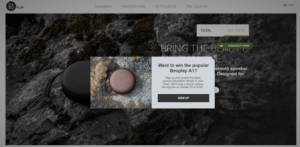— October 9, 2017

antonynjoro / Pixabay
Here are 4 facts on email marketing.
- The vast majority of online sales companies still use transactional emails as part of their marketing efforts.
- Email marketing campaigns have open rates of up to 40-50% and click rates of around 10-20%.
- Email marketing campaigns are here to stay.
- The more people get used to online marketing campaigns, the cleverer you have to be with the content and timing of your emails sent to the clients.
So… Just between us…
Have you ever conducted an email marketing campaign that didn’t have the desired results and kept wondering what went wrong?
And even worse, have you ever had to stop a campaign as it did more harm than good?
Yes, these things actually do happen!
That’s why it is essential to analyze in real-time which emails are successful and which are not.
The Old Way
Do these metrics look familiar?
- Open rate
- Click rate
- Conversion rate
They should – as most companies use these classical metrics in their analysis.
In my experience, this is an oversimplified way of looking at things. It doesn’t give you the right answers, nor does it produce the desired results.
Useful as it might have been some time ago, this method is simply not refined enough to provide you with all the data you need in order to make informed decisions regarding your email campaigns.
The New Way
After years of working in the field of analytics, I have come up with the following measurement framework:
- Target audience
- Audience that opened the email
- How many of them converted
- Audience that didn’t open the email
- How many of them converted
By following this approach, you will get more detailed information on which email campaigns work and which don’t.
Content and Timing
The main factors that come into play when users decide on purchasing your product or not are the content and the timing of the email you send.
Content-wise, the recipe for success is no surprise: find an eye-catching title and a content to match it, and you’re all set.
Timing however, is another issue…
Software companies have it easier than e-commerce. Here is a typical scenario:
After researching onboarding timing, a software company might discover that 80% of users usually take less than 40 minutes to onboard. This would be the best time to send the first email.
Send the email before the 40-minute benchmark, and your potential customers might be annoyed and abandon the purchase.
Send the email after the 40-minute benchmark, and your user will already have forgotten about your product.
Digital & Social Articles on Business 2 Community
(73)







